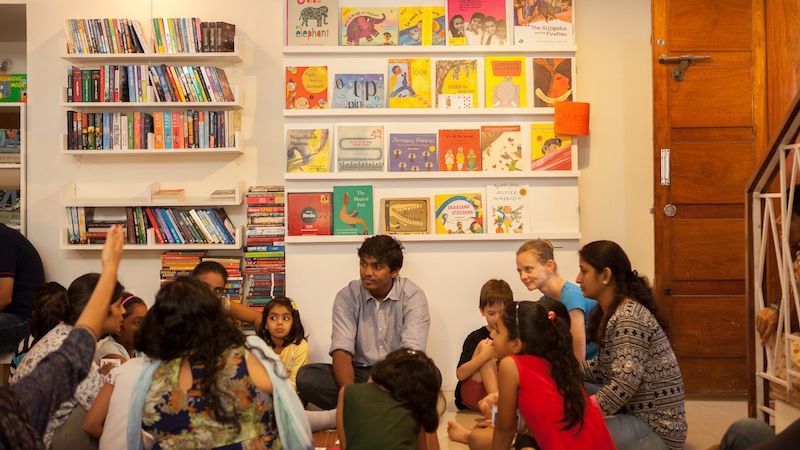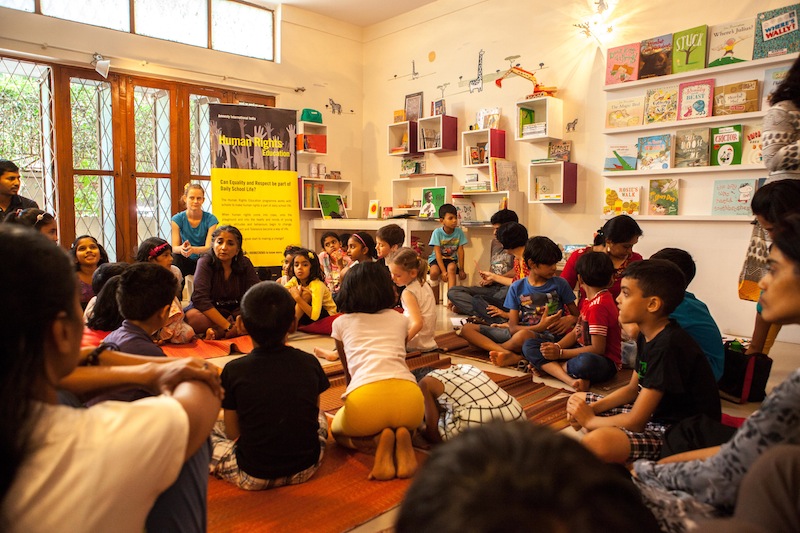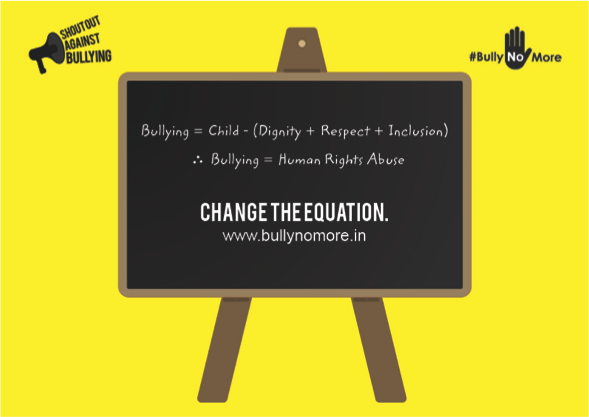Teasing, name calling, rumor spreading… No more, say the students from the city of Bangalore. Young people in a school in India are role-playing theatrical characters to denounce bullying.
When Kala and Priya, two 13 year old pupils at the Delhi Public School of Bangalore North, decided to create a study group on a social media platform, they knew little about the dramatic consequences this could have. But soon the group became the target of Rajan, the school’s bully, and their online platform transformed into a virtual playground, where repetitive insults and abuses multiplied…
These situations are not rare at school and social media has added another layer to the threat posed by bullying. Fortunately Kala and Priya are fictional names and their story – despite its realism – is an imagined scenario. It is the plot of a theatrical role-play created by a team of 13 year old students. The teenagers wrote the script and built a performance around the theme of cyber bullying to encourage their audiences to reflect on real life experiences.

Arpita Mohapatra, English teacher at the school, supervised the play. “We use theatrical performances to sensitize children to the issue of bullying. Whether it is cyber bullying, physical bullying or verbal bullying, we seek to make students aware that those are human rights abuses, and can have far reaching consequences, she says.
The school is one of 80 Human Rights Friendly Schools across India. Based on the principle of equality, dignity, respect, non-discrimination and participation, this global approach to making human rights real in schools creates inclusive environments where human rights values are integrated into all aspects of the school’s daily life. In India, schools identified bullying as a major issue and tackling those acts on the playground became one of the pillars of the whole-school approach.
Arpita’s school has fully incorporated tackling bullying into the students’ program and textbooks. “Like in every other school, we have been confronted with these types of abuses, and by implementing Amnesty India’s Bully No More campaign in our classrooms, we were looking at ways to solve them,” says Arpita.
Since then, we have become a bully-free zone – a space where kids are taught that bullying is considered a human rights abuse and will not be tolerated.
Arpita Mohapatra, English teacher at the Dehli Public School of Bangalore
Arpita had been teaching in the school for 6 years, and has received training through the human rights education program of Amnesty International India. She says she has become more aware of the consequences and origins of bullying: “I remember a particular case where I initiated the dialogue with a young boy who had been bullying his peers. As the conversation unfolded, I discovered that his parents had left and his grandparents were being completely unsupportive. This made me realize the importance of understanding what is underlying at the root of the issue if we want to solve the problem,” she says.
Recreating real life situations through theatrical performance is one of the methods implemented by Arpita’s school to open up and talk about bullying. Arpita explains that engaging pupils in activities such as debates and the creation of an anti-bullying slogan has encouraged them to talk more freely. “We noticed that children who commit those acts or who are spectators are now more likely to come to us, saying those acts are wrong.”
The campaign has met with great enthusiasm among students. “I now see children admitting their mistakes and telling me: ‘I’m glad you told me this is human rights abuse,’” she says.

Understanding the core of the problem by getting to know the reasons behind bullies’ behavior has become part of the school’s approach. “We now address any incident from both sides. We also organize counseling sessions with the parents of the students involved to help us tackle the problem at the grass root level,” says Arpita.
Research has shown that abuses inflicted among peers can have devastating consequences on both the bullied and the bullies: this form of violence can deteriorate performance or relationship-building, and have a lasting impact on the child’s physical, mental, moral and social development. When placed within a human rights context, bullying denies pupils the rights to respect and dignity, and violates the human rights values of inclusion, participation and non-discrimination, says Inka Dama, Media Officer for Human Rights Education at Amnesty International India.

By implementing the whole-school approach, Amnesty International India aims to encourage teachers, students and parents to develop anti-bullying policies and structures. “If schools only use the traditional way of dealing with bullying through punishment or monitoring of the perpetrators, it doesn’t root out the problem especially since there are several places where this can’t be done,” says Inka Dama.
On the other hand, if children learn about relationships, the school environment and bully-free zones, they will begin to understand that this is against someone’s rights. The school is where children spend their day, learn, see and experience. This becomes part of their personality and – eventually – of who they will be.
Inka Dama, Media Officer for Human Rights Education at Amnesty International India

Amnesty International India aims to engage parents with the Bully No More awareness campaign. They have just launched Shout Out, a participative online space for people to break the silence around bullying by uploading an image and message to share on social media and connect with people interested in the fight against bullying.


